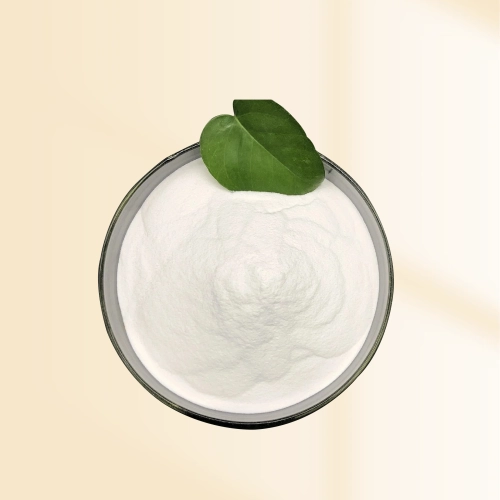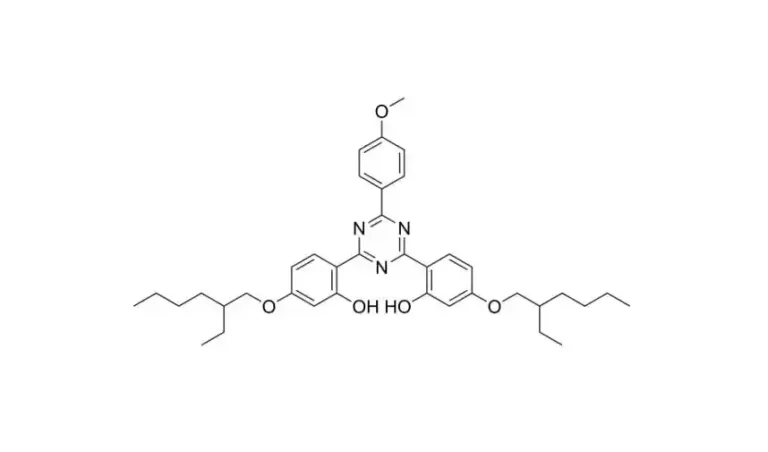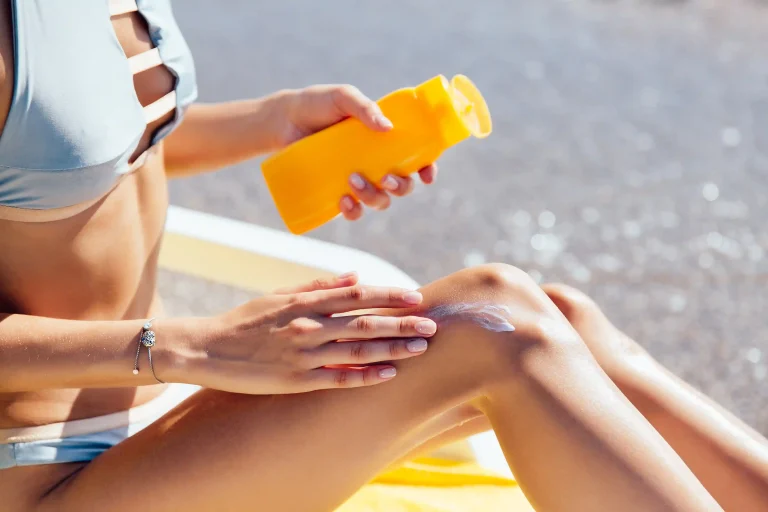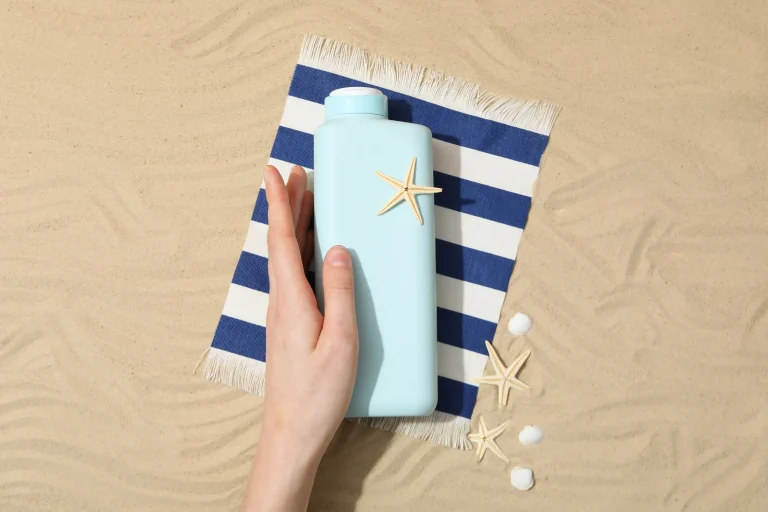Both titanium dioxide and zinc oxide provide full UV protection. This matters because two types of UV rays, UVA and UVB, harm our skin. UVA rays reach deeper. They go into the skin.

They cause wrinkles and sagging. They’re present all year, even passing through windows. UVB rays are shorter. They hit the skin’s top layer. They cause sunburn and damage DNA in skin cells. This can lead to skin cancer. Full protection guards against both types of harm.
What Is Zinc Oxide?
Zinc oxide is a popular mineral in sun protection products. It’s known for its unique qualities. It looks like a white, powdery material. It comes in tiny and super-tiny forms. These forms balance a clear look with UV protection. Its strong light-blocking ability makes it a great sun shield. Chemically, zinc oxide stays stable. It doesn’t mix easily with other ingredients. This keeps it working for a long time. It also doesn’t dissolve in water. This helps it stay strong in different product blends.
Zinc oxide protects by bouncing, scattering, and soaking up UVA and UVB rays. It acts as a physical shield. It gives all-around protection. It stops rays that cause skin damage, sunburn, and higher skin cancer risk. It’s mainly a physical blocker. But it also soaks up some UV rays. This makes it even more protective.
What Is Titanium Dioxide?
Titanium dioxide (TiO₂) is a vital UV shield in skincare. It’s a powerful ingredient because of its special traits. It appears as a white, powdery material. It comes in tiny and super-tiny forms. Tiny particles offer strong UVB protection. Super-tiny ones reduce the white look on skin and improve UVA protection. Its great light-blocking ability helps it protect from the sun.
Chemically, titanium dioxide is stable and calm. It doesn’t react easily with other ingredients. It stays strong in sunlight. This ensures long-lasting UV protection. Its non-reactive nature means it doesn’t cause irritation or allergies. This makes it perfect for sensitive skin.
Titanium dioxide provides all-around protection. It bounces, scatters, and soaks up UVA and UVB rays. It works as a physical wall. It doesn’t clog pores. This suits acne-prone skin. It’s gentle and non-irritating. It’s often recommended for sensitive skin and baby products.
Good blending is crucial for its effectiveness. It’s often mixed with other UV shields. This boosts protection and improves the product’s appearance.
Zinc Oxide vs Titanium Dioxide: Key Differences
Both zinc oxide and titanium dioxide are excellent mineral UV shields. But they have unique traits that affect their use in skincare products. Understanding these differences helps makers choose the right one.
Here’s a comparison of their main differences:
| Feature | Zinc Oxide | Titanium Dioxide |
| UV Protection | Offers excellent all-around protection. Blocks UVA and UVB rays. Very strong against deep-reaching UVA rays (UVA1). These cause early aging. | Gives great protection against UVA and UVB rays. Very effective against UVB rays (sunburn) and short UVA rays. Its UVA protection is slightly less than zinc oxide’s. |
| Skin Fit | Gentle and non-irritating. Fits sensitive and reactive skin. Has soothing qualities to calm irritation. Great for baby sunblocks, rosacea, or eczema. Doesn’t clog pores. | Gentle and non-irritating. Fits sensitive skin. Good for rosacea or eczema. Doesn’t clog pores. Less likely to sting around the eyes. |
| Look on Skin | Can leave a white layer, especially in non-tiny forms. Tiny and coated forms are clearer. They reduce the white look. | Can leave a white layer in traditional forms. Tiny and coated forms are clearer. Often has less white look than zinc oxide. |
| Particle Size & Stability | Comes in tiny and super-tiny forms. Super-tiny zinc oxide balances clarity and all-around protection. Very stable in sunlight. | Comes in tiny and super-tiny forms. Super-tiny titanium dioxide boosts UVB protection and gives a light feel. Very stable. Some forms may need coatings to avoid harmful reactions. |
| Mixing Challenges | Hard to blend evenly, especially in water-based blends. Tends to clump. Needs special blending methods and stabilizers. Coated forms help. | Blending can be tough, especially for high-SPF products. Smaller particles make mixing easier. Stability can be tricky, but modern types improve it. |
Which Is Better for Your Skin Type?
Choosing the right UV shield for your skincare products depends on your goals and your customers’ needs. Both zinc oxide and titanium dioxide are great for sensitive skin. They cause little irritation. They don’t sink into the skin.
For sensitive skin, babies, or people with rosacea or eczema, zinc oxide is a top choice. Its soothing qualities calm irritation. Titanium dioxide is also very good for sensitive, redness-prone skin. It’s gentle and less likely to sting around the eyes. Skin doctors often suggest it.
For acne-prone skin, both don’t clog pores. Titanium dioxide may be preferred for its light, non-oily feel in some products.
For oily skin, titanium dioxide’s light texture is a good fit. It won’t worsen breakouts.
For dry skin, titanium dioxide can pair with moisturizing ingredients. This locks in hydration while protecting from UV rays. Zinc oxide also helps keep the skin barrier strong.
For eco-conscious customers, zinc oxide is often seen as more reef-safe and eco-friendly. Both are favored in areas with reef-safe laws. Many titanium dioxide products meet cruelty-free standards. This appeals to vegan-friendly buyers.
How to Choose the Right Mineral Sunscreen
When making products with titanium dioxide and zinc oxide, some practical tips and rules help create high-quality, user-friendly sun protection.
Formulation Tips:
- Blending: Even blending is key for good UV protection and coverage. For titanium dioxide, coated types blend better in oil-based mixes. For zinc oxide, coated types work well in oil-based mixes. Special types are made for water blending. High-shear mixing and stabilizers prevent clumping.
- Particle Size: Tiny or super-tiny forms reduce the white layer. They improve clarity. This gives a natural look that customers like.
- Ingredient Fit: Ensure ingredients work well together. This keeps stability and effectiveness. Titanium dioxide may react with some antioxidants. It needs proper stabilization. Zinc oxide can be hard to blend evenly. Choose the right particle size and coating for stability.
- Texture: Particle size and coatings affect the product’s feel. Tiny and coated forms create a smoother texture. This improves the user experience.
Regulatory Considerations:
- FDA (USA): Both titanium dioxide and zinc oxide are approved as safe and effective for sunblocks. The maximum allowed is 25% for each.
- EU Rules: The European Union approves both shields for sunblocks. It has similar limits. It requires labeling for super-tiny particles.
- Reef-Safe Laws: In places like Hawaii, some chemical sunblocks are banned to protect coral reefs. Mineral shields like zinc oxide and titanium dioxide are preferred as reef-safe.
- Labeling Rules: Follow local laws for labeling, especially for super-tiny particles. This helps customers make informed choices. In the USA, sunblocks are treated as drugs and need strict testing. The EU has specific safety and labeling rules.
Zinc Oxide and Titanium Dioxide in Combination
Makers often mix titanium dioxide and zinc oxide. This creates sunblocks with strong all-around protection. Zinc oxide is great against deep-reaching UVA rays. Titanium dioxide is strong against UVB rays and short UVA rays. Together, they block all harmful UV rays. This makes the product better at stopping sunburn, early aging, and skin cancer.
Mixing these shields also improves the product’s look. Both can leave a white layer alone. But tiny and coated forms reduce this effect. Careful mixing creates light, clear sunblocks. Customers are more likely to use these daily.
New ideas include hybrid sunblocks. These mix mineral shields like zinc oxide and titanium dioxide with chemical shields. This gives wider protection. It also reduces the white layer. These mixes are more water-resistant. This makes them great for outdoor use.
Working with trusted suppliers is key to better products. It helps meet customer needs for safe and effective sunblocks.
BFP: A Trusted Titanium Dioxide Manufacturer
BFP is known for its great work in making titanium dioxide. This mineral is vital for sunblocks. It shields skin from harmful UV rays. BFP’s products are special. They offer strong protection against UVA and UVB rays. These rays cause sunburn, early aging, and skin cancer. BFP’s titanium dioxide is gentle. It suits people with delicate skin. This includes those with redness or irritation.
BFP uses modern methods to produce their titanium dioxide. They start with high-quality materials. These are carefully chosen for purity. The process has several steps. They refine the materials to remove unwanted bits. Then, they shape the titanium dioxide into tiny or super-tiny particles. These particles help sunblocks spread evenly. They also avoid a white layer on the skin.

BFP tests their products carefully. They check for safety and performance. This ensures the titanium dioxide works well. It must block UV rays effectively. It should also feel light and comfortable. BFP’s strict checks make their products reliable. Brands trust them for quality.
Frequently Asked Questions (FAQs)
Who Should Not Use Zinc Oxide?
Zinc oxide is great for sensitive skin, including rosacea or eczema, and baby sunblocks. It’s gentle, non-irritating, and soothing. No information suggests anyone should avoid it. It doesn’t clog pores.
Can I Use Regular Sunscreen With Zinc Oxide Sunscreen?
Yes, mineral shields like zinc oxide can mix with chemical shields in hybrid sunblocks. This gives wider protection and reduces the white layer. You can combine them in one product or layer them.
How Often Should You Reapply Mineral Zinc Oxide Sunscreen?
Reapply titanium dioxide every two hours during long sun exposure. This is a general rule for sunblocks. Zinc oxide is a UV shield, so reapply it similarly to keep protection strong.
Key Takeaways on Zinc Oxide vs Titanium Dioxide
- Full Protection: Both titanium dioxide and zinc oxide are great mineral UV shields. They block UVA and UVB rays. This stops sunburn, early aging, and skin cancer.
- Skin Fit: Both are gentle and non-irritating. They suit sensitive skin, acne-prone skin, and baby products. Zinc oxide has soothing qualities.
- Specific Strengths: Zinc oxide is great for deep-reaching UVA rays and calming skin. Titanium dioxide is strong against UVB rays and short UVA rays. It has a lighter feel and less white look in modern forms.
- Look on Skin: Traditional forms may leave a white layer. Tiny and coated forms improve clarity and give a natural finish.
- Mixing & Combination: Combining titanium dioxide and zinc oxide uses their strengths. It gives strong all-around protection and better look. Good blending methods are key for stable products.
- Rules & Market Trends: Both are approved by the FDA and EU. They’re favored by eco-conscious customers for being reef-safe. The market prefers mineral-based sunblocks due to concerns about chemical shields and a desire for clean ingredients.











